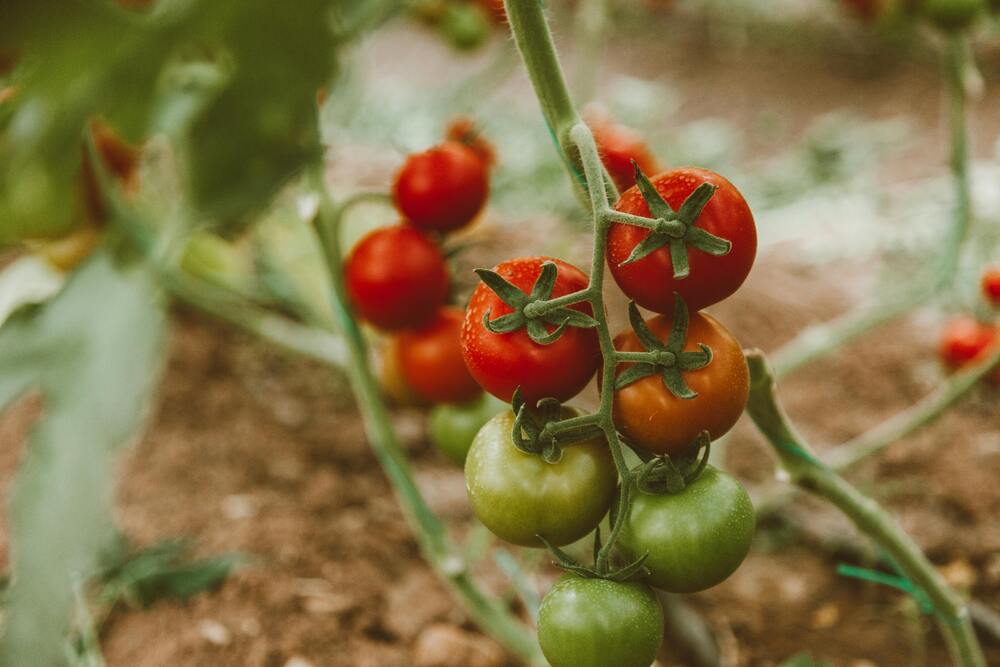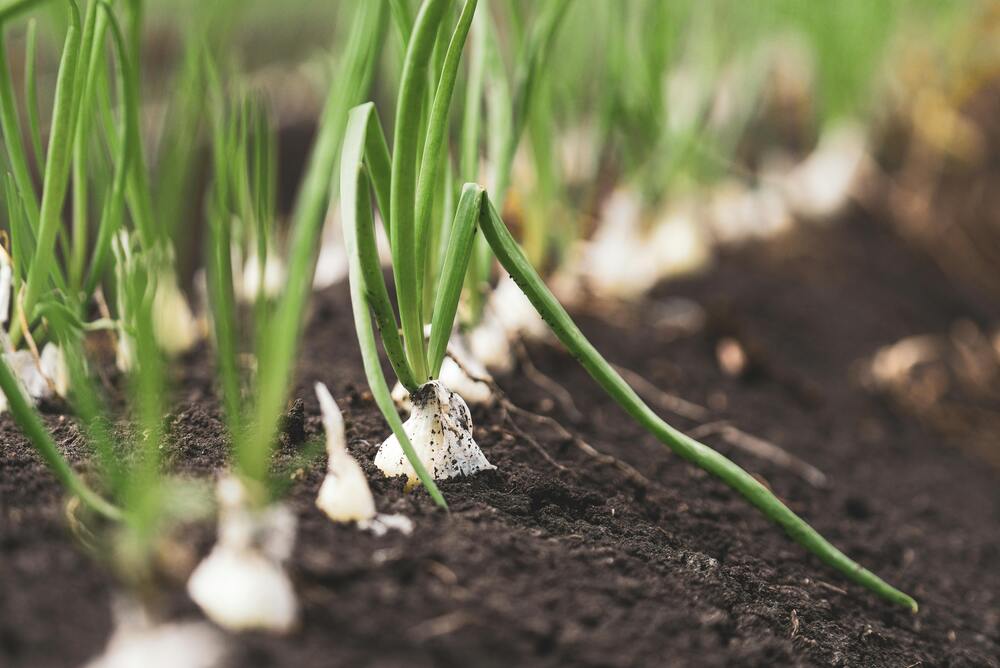The Ultimate Guide to Tomato Companion Planting
If there is one plant that defines the New Zealand summer vege patch, it’s the tomato. Nothing beats that first sun-warmed, juicy, homegrown tomato straight off the vine. It’s the prize we wait all year for.
But as every seasoned Kiwi gardener knows, getting a truly bumper crop of blemish-free tomatoes isn’t easy. The plants are vulnerable to pests, prone to disease, and need a lot of support to reach their full, glorious potential.
As your local garden experts at Jim’s Mowing NZ, we’ve put together the ultimate guide to tomato companion planting, ensuring you get the healthiest plants and the most flavourful harvest this season.
In this blog you’ll learn:
- Which plants work best with tomatoes
- Other veggies and herbs aside from the best companions
- Which plants to avoid
The Benefits of Tomato Companion Planting

Tomatoes are heavy feeders and they are targets for some of the most frustrating garden pests. Planting the right neighbours offers three main benefits:
- Natural Pest Control – Many herbs and flowers emit strong scents that confuse or repel notorious tomato villains like the whitefly, aphids, and the caterpillars of the tomato fruitworm and tomato hornworm.
- Soil and Nutrient Improvement – Some plants act as a living mulch, while others can improve the soil structure or draw up specific nutrients.
- Disease Management and Growth – Certain companions can attract beneficial insects that prey on pests, or simply boost the overall vigour of the tomato plant.
Tomato’s Must-Have Companions

If you only plant three things with your tomatoes this summer, make them these three powerhouses.
1. Basil
This is the most famous pairing in the gardening world for a reason—and they taste great together, too! Basil is a phenomenal natural repellent. Its strong aroma helps to deter whiteflies (which cause mottled, sticky leaves) and the caterpillars that chew holes in your tomatoes. Plant a basil seedling near the base of every tomato plant for maximum protection. They share the exact same needs: full sun, rich soil, and plenty of water.
2. Marigolds (Tagetes spp.)
These bright, cheerful flowers are the undisputed heavyweight champions of pest control in the vege patch. Marigolds repel a wide range of pests, but most importantly, they secrete a chemical from their roots that suppresses nematodes (microscopic worms) in the soil, which can attack and weaken your tomato roots, leading to stunted growth. French marigolds (Tagetes patula) are particularly effective. Plant them throughout the tomato bed, not just around the edge.
3. Alliums (Chives, Onion, Garlic)
This group of plants, including chives, spring onions, and garlic, are essential for their powerful, sulphur-based scent. The smell of alliums acts as a general repellent, masking the scent of the tomato plant and deterring common nuisances like aphids and spider mites. They are also thought to help ward off fungal diseases. Plant chives right up close to the base of your tomatoes, as they won’t compete for resources.
Vegetable & Herb Companions

Expand your companion planting with these partners for an even healthier garden.
Borage
Borage is a fantastic companion, not only because its fuzzy leaves attract beneficial insects like bees and tiny parasitic wasps (which attack caterpillars and aphids), but also because its deep roots draw up minerals and calcium. This can help prevent Blossom End Rot, a common tomato issue caused by calcium deficiency. Give it space or plant it at the corner of your tomato bed as the plant can get large.
Carrots
Carrots make great neighbours because their deep, straight roots aerate and loosen the soil, improving drainage for the tomato’s root system. They also grow below ground, so they don’t compete for light. Plant carrots at the same time as the tomatoes so they can be harvested before the tomato vines get too bushy.
Parsley
Parsley is an ideal low-growing ground cover, acting as a “living mulch.” It helps to keep the soil cool and moist (which tomatoes love) and suppresses weeds. It also attracts beneficial hoverflies and parasitic wasps to the area. Plant parsley near the base of the tomato stakes or cages.
Asparagus
This is a long-term, symbiotic relationship! Asparagus repels nematodes that target tomatoes, and tomatoes, in turn, help to repel asparagus beetles. If you have an established asparagus bed, plant a row of tomatoes next to it.
Lettuce
Lettuce works perfectly as a living mulch, shading the soil to keep it cool and suppressing weeds. It’s a quick-maturing crop that is typically harvested before the large tomato plants need all the space and nutrients. Plant lettuce between the tomato plants to maximise space efficiency.
The Plants to Avoid – Never Plant These with Tomatoes!
Just as some plants are helpful, others can be toxic, compete aggressively for nutrients, or share the exact same diseases, which can wipe out your whole crop. Keep your tomatoes well clear of these rivals:
- The Brassica Family (Broccoli, Cabbage, Kale, etc.)
These are heavy feeders that will aggressively compete with tomatoes for vital minerals like calcium and magnesium. This competition often leads to nutrient deficiency issues in your tomatoes.
- Fennel
This is one of the most anti-social plants in the garden. It excretes a chemical compound that inhibits the growth of almost all neighbouring plants, including tomatoes. Give fennel its own secluded corner.
- Corn (Maize)
While both love sun and heat, they are susceptible to the same devastating pests, particularly the tomato fruitworm (or corn earworm). Planting them together creates an ideal breeding ground for these insects, guaranteeing a bigger, faster infestation.
- Walnuts and Black Walnuts
The roots of these trees release a toxic chemical called juglone. This substance will cause your tomato plants to wilt and die.
Your Companion Planting Action Plan

Ready to get planting? Follow these simple steps for a healthier tomato crop:
- Assess Your Space – Identify the sunniest spot in your garden—tomatoes need at least six to eight hours of direct sun.
- Interplant, Don’t Segregate – Instead of planting a whole row of tomatoes next to a whole row of basil, scatter your companions! Place marigolds and basil every few feet between the tomato plants.
- Vertical Help – If you’re short on space, use pots. Plant your large tomato in a container and surround the base with smaller herbs like parsley or chives, acting as a living, easy-to-harvest mulch.
- Water Carefully – Many fungal diseases (like blight) are spread by water splashing onto the leaves. Always water the soil deeply at the base of the plant, avoiding the foliage. The low-growing companions will help keep the soil from splashing up.
In Summary
By embracing the power of companion planting, you’re not just growing plants, you’re cultivating a resilient ecosystem that fights pests and boosts productivity on your behalf. Choosing the right neighbours for your tomato crop is the most effective organic strategy you can employ this season to guarantee healthy vines, abundant flowers, and a summer filled with the richest, most flavourful fruit. This method works by bringing your garden into a natural, harmonious balance, reducing your reliance on chemical interventions.
If you need any guidance on preparing your soil, setting up your perfect tomato patch, or general garden maintenance, don’t hesitate to call your local team at Jim’s Mowing NZ! We are passionate about helping Kiwis grow beautiful gardens and even better kai.
Happy growing!




